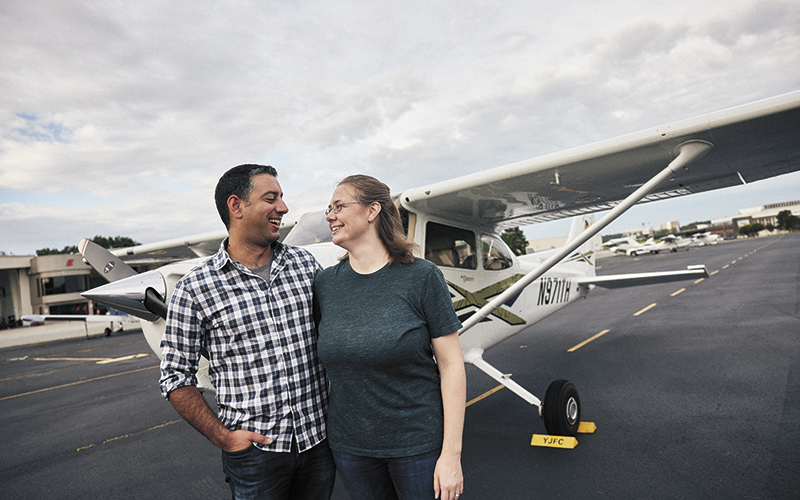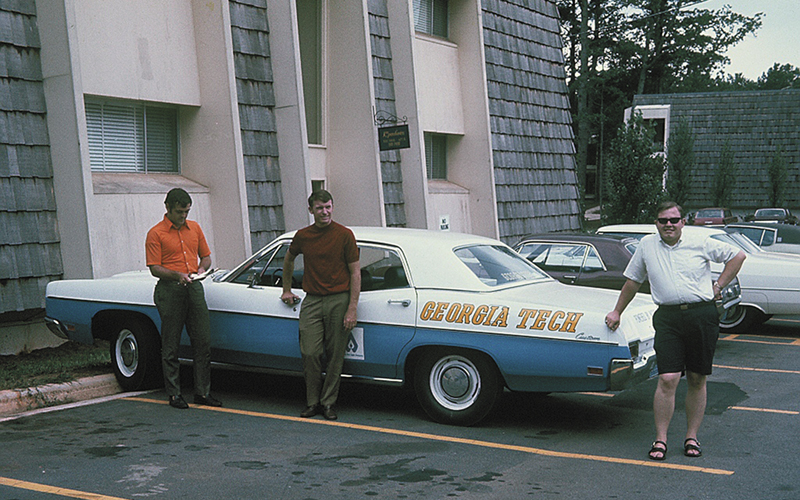Georgia Tech Couple Revives Sustainable Oyster Farming
By: Colleen McNally Arnett | Categories: Alumni Celebrations
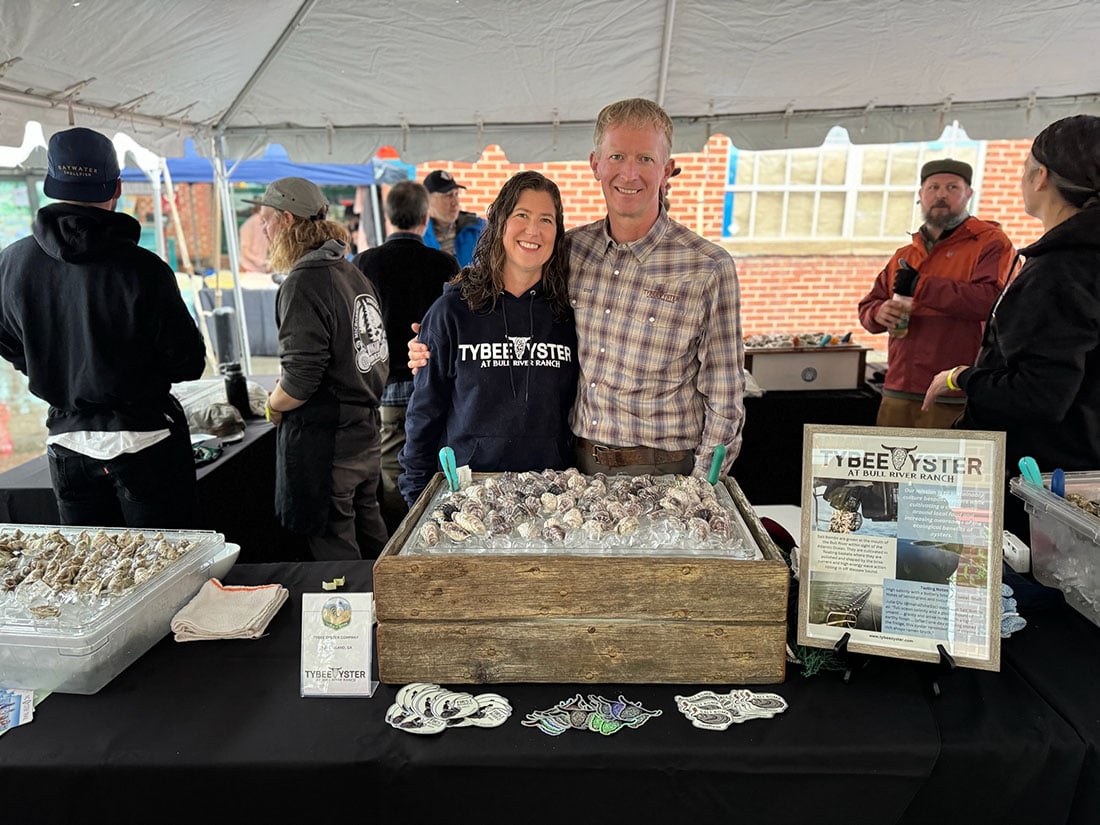
Only a small percentage of the oysters eaten in Georgia today are locally sourced, despite the state’s history as a leading oyster producer in the early 1900s. On track to produce close to 250,000 oysters this year, the Tybee Oyster Co., run by two Georgia Tech alumni, is helping revive the state’s industry in a sustainable way.
Perry Solomon, CE 99, and Laura Solomon, IE 00, are not who you might expect to be pioneer oyster farmers. A native of Tybee Island, Perry earned his master’s degree at the Marine Corps University and flew fighter jets for 20 years in the U.S. Navy before returning to his hometown, with his family in tow, as a captain for Gulfstream Aerospace. Meanwhile, Laura expanded her career in education, nonprofits, and consultancy.
Along the way, they traveled and ate their way across the world, developing a fascination for global foodways—specifically oysters—and sustainable mariculture. Their shared passion eventually led them to bring the best practices for oyster farming back home, literally.
In 2022, the husband-and-wife team launched Tybee Oyster Co., becoming Georgia’s first floating oyster farm. From the dock at the Savannah Boathouse, the couple typically commutes five miles by boat to their 7.5-acre lease on Bull River multiple times a day to raise, harvest, and sell oysters. They are so dedicated that they cross rival lines to source seeds provided by UGA Oyster Hatchery on the nearby Skidaway River. (The Solomons’ oldest daughter is also a student at UGA. “A real failure for the alumni magazine,” Perry quips. “Just playing. We’re super proud of her.”)
Instead of using congested interstates and GPS to get to work, the Tybee Oyster Co. team navigates with tide charts and weather forecasts. (Last fall, just as the farm was gaining momentum, sadly half of their crop was lost due to Tropical Storm Debby and Hurricane Helene.) Their coworkers, so to speak, are phytoplankton and algae, which are oysters’ main source of food.
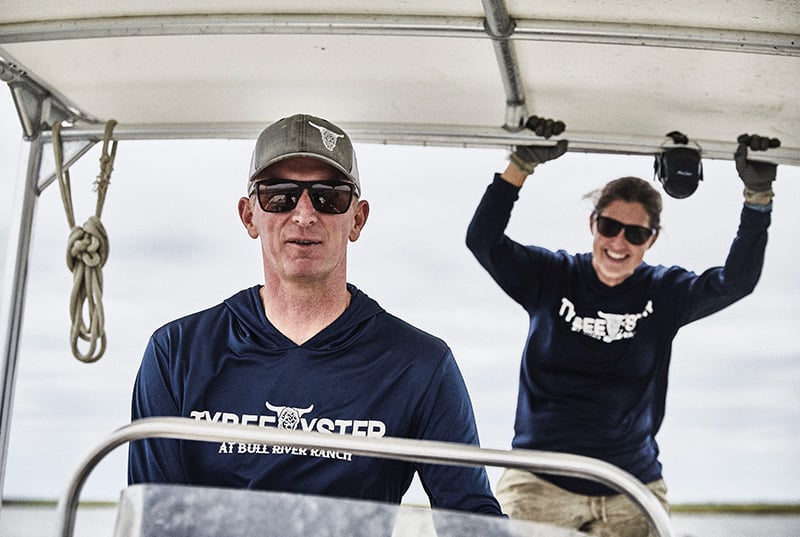
As filter-feeders, oysters naturally play a crucial role in environmental protection by improving water quality and biodiversity and bolstering strong ecosystems.
This science is why the Solomons’ mission goes far beyond growing bespoke bivalves for the region’s top chefs and most-discerning diners; they’re also committed to increasing awareness of the ecological benefits of sustainable aquaculture.
To do the latter, Laura regularly swaps her coveralls and work boots to put her teaching hat back on. When she’s not on the farm or with her family, she serves as the director of Growth and Planning for the Tybee Island Maritime Academy (the state’s only Georgia Department of Education STEAM-certified K-8 school). In 2024, she also founded a nonprofit called ECO Georgia with Katie Holliday, a science teacher at the academy. Together, they have brought the real-world lessons of aquaculture into the classroom, fostering the next generation of oyster fans.
Of course, students aren’t the only ones who can benefit from learning more about oysters. Given the infancy of Georgia’s industry, the Solomons have spent many hours engaging with local thought-leaders, from politicians to chefs to journalists, both on land and by boat rides, so more people can experience the farm firsthand.
In line with their mission, the Solomons hosted the inaugural Georgia Oyster Revival in Savannah, an event that raised $20,000 for ECO Georgia. They are also active in nonprofits like Oyster South and Shell to Shore, an Athens-based oyster shell recycling program. And, earlier this year, Laura served as the alumni keynote speaker for Georgia Tech’s Sustainability Showcase, where she emphasized how oysters help coastlines become more resilient against threatening storms, sea level rise, erosion, and poor water quality. Next up, she is participating in the Institute for Georgia Environmental Leadership’s class of 2025, one of 30 leaders chosen to help confront environmental issues statewide.
Back at home, one issue that oyster farmers have advocated for is the length of Georgia’s season, traditionally open during the cooler months of October through June. Recently, the Georgia Board of Natural Resources approved a new rule to extend the harvest season year-round, while also introducing strict conditions for time and temperature controls, cold-chain management procedures, trained personnel, recordkeeping, and more.
“Some people are more risk-averse. Some people see innovation as a way to move the needle. You inherently have conflicting opinions, but it’s also an opportunity to work collaboratively with policymakers and regulators and truly build an industry,” Laura says. “While it can be very frustrating, I’m grateful that we have a voice in it.”
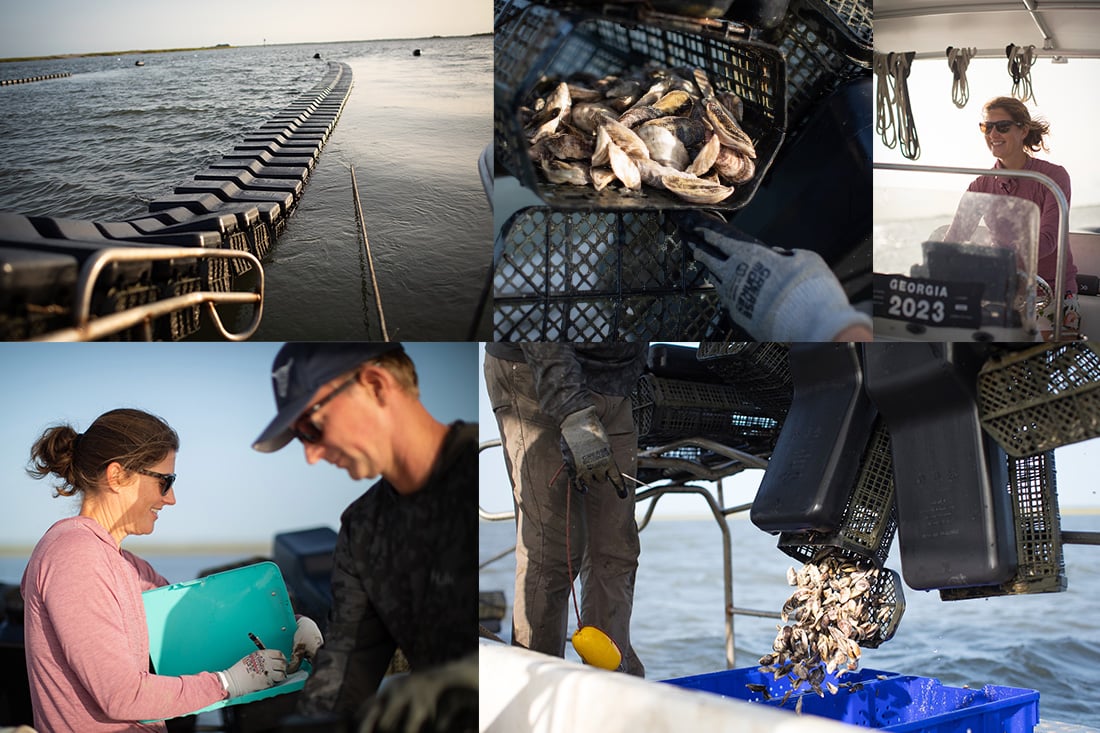
After all, coastal Georgia is their home and where the couple first crossed paths as teens. As high schoolers in the mid-’90s, Laura and Perry met on the beach briefly the summer before starting at Georgia Tech. When they showed up for freshman orientation a few weeks later, they were surprised to find each other in the same small group.
“We ended up signing up for a lot of the same classes,” Perry recalls. Since they both could exempt out of Calculus I and II, they enrolled together in a tougher math class and held each other accountable. They were also both drawn to water activities; Laura rowed and Perry sailed. “Water has always been part of our relationship,” Laura adds, as have Georgia Tech and their shared love for problem-solving.
While neither of them works in the fields they studied as undergrads, they credit the Institute’s rigorous curriculum for preparing them to confidently pursue their new careers as oyster farmers. “A degree from Georgia Tech proves you can do something hard,” Perry says. “You’re a self-starter, you can learn, and you’re capable of overcoming obstacles.”
When you order a dozen on the half-shell at a restaurant, the raw shellfish arrive shucked and ready to eat, elegantly arranged on ice, and belly-side up. However, the experience shouldn’t end there. Before slurping down the meat, pay attention to these clues about the oyster’s origin. Here, Perry and Laura Solomon share tips to become a bivalve aficionado.
Tiny Miracle
Take a moment to appreciate the natural beauty. Like leaves, snowflakes, or human fingerprints, no two oysters are identical. The shape, size, and texture of every shell is unique. When wet, the shells may appear iridescent—a quality that can get lost when they’re dry.
Local Flavor
Just as wine experts can identify terroir, the taste—or merroir—of an oyster is influenced by its habitat. Some varieties are sweeter, while others taste more salty. Tybee Oyster Co.’s oysters are nicknamed Salt Bombs because of the extra briny quality of the Atlantic waters. (Tybee Island gets its name from the Euchee tribe’s word for “salt.”) Likewise, a shell’s colors and stripes offer hints about the oyster’s history.
Wild Guess
Can you tell how the oyster was raised? Off-bottom oysters, grown in floating cages like Tybee Oyster Co.’s, typically boast bigger, deeper cups, making them a preferred canvas for chefs. Wild-caught or bottom-culture oysters, however, may appear more gnarly with stronger shells and tiny holes drilled by predatory snails.
